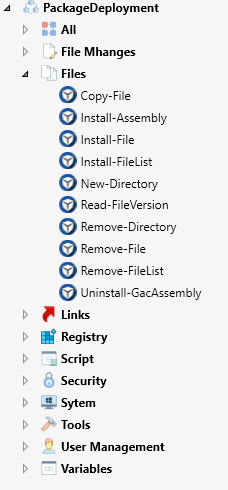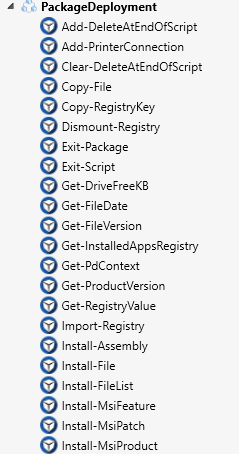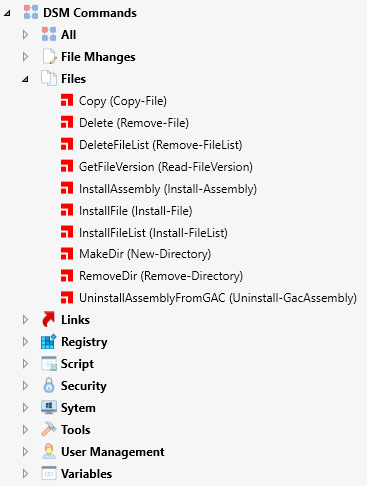Available commands
Available commands
The commands for scripting that go beyond the App Deployment Toolkit are located in the so-called "Runtime Module" of the Packaging PowerBench, which is called "PackageDeployment". This module is part of each package and is located in the installation directory in the "Common Runtime Files" subfolder. The contents of this folder are copied to the package directory when a new package is created or when an exported DSM package is converted, and are then available at runtime.
In the Packaging PowerBench window, you can find the cmdlets that the module implements in the command list on the left side under the "PackageDeployment" module node. By default, the commands are divided into categories that you also know from the command list in the DSM Packaging Workbench. This makes it easier for you to find the command you are looking for.

If you prefer a less nested structure, you can show or hide the command categories using the "Categories" checkbox in the "Display" section of the "View" tab. If you hide the categories, you will see the alphabetically sorted list of all commands of the PackageDeployment module:

|
Note: You can show or hide the command list in the "View" tab using the checkbox of the same name. If you hide the list, you must insert commands using the "Insert Command" button on the "Start" tab or keyboard shortcuts. For more information, see the Inserting Commands section. |
To make it easier for you to get started with or switch over from DSM, we have added a further node "DSM Commands" to the command list. The command names listed there are merely aliases to the actual cmdlets of the PackageDeployment module. However, since most experienced DSM packagers know the names of the common commands by heart, this list saves you the time-consuming search for the DSM counterparts. The "real" name of the cmdlet is in parentheses after the DSM command, so that you automatically learn the "new commands" over time. If you no longer need the DSM commands, you can hide this alias list using the configuration file.
